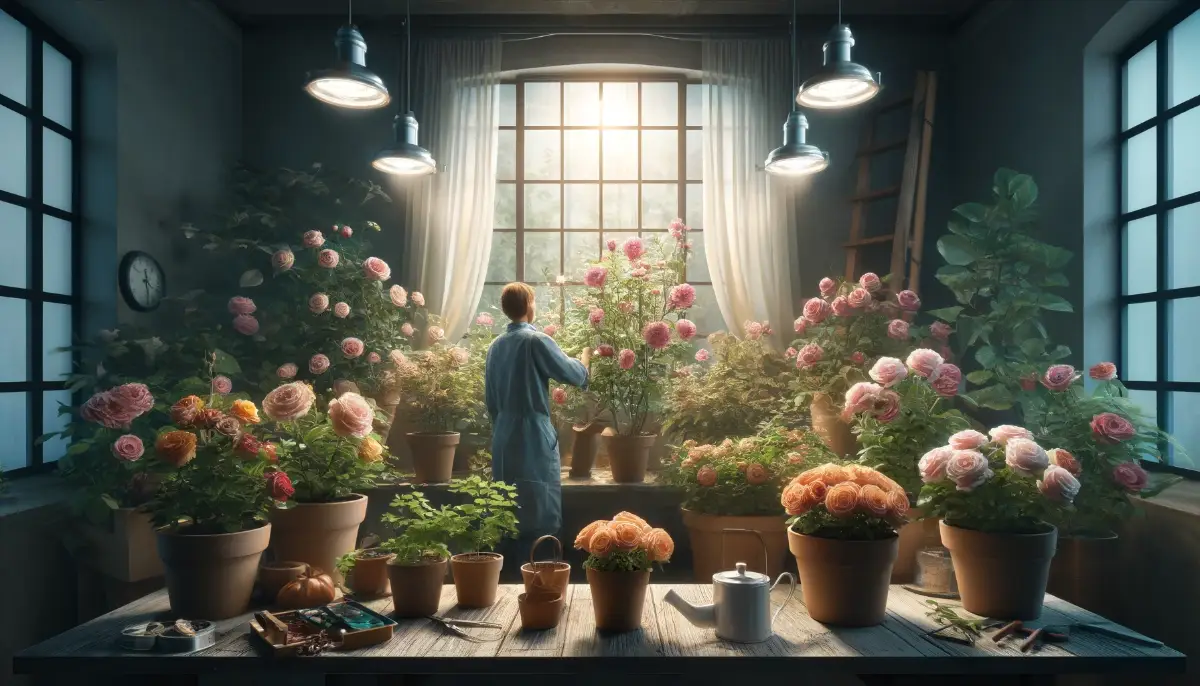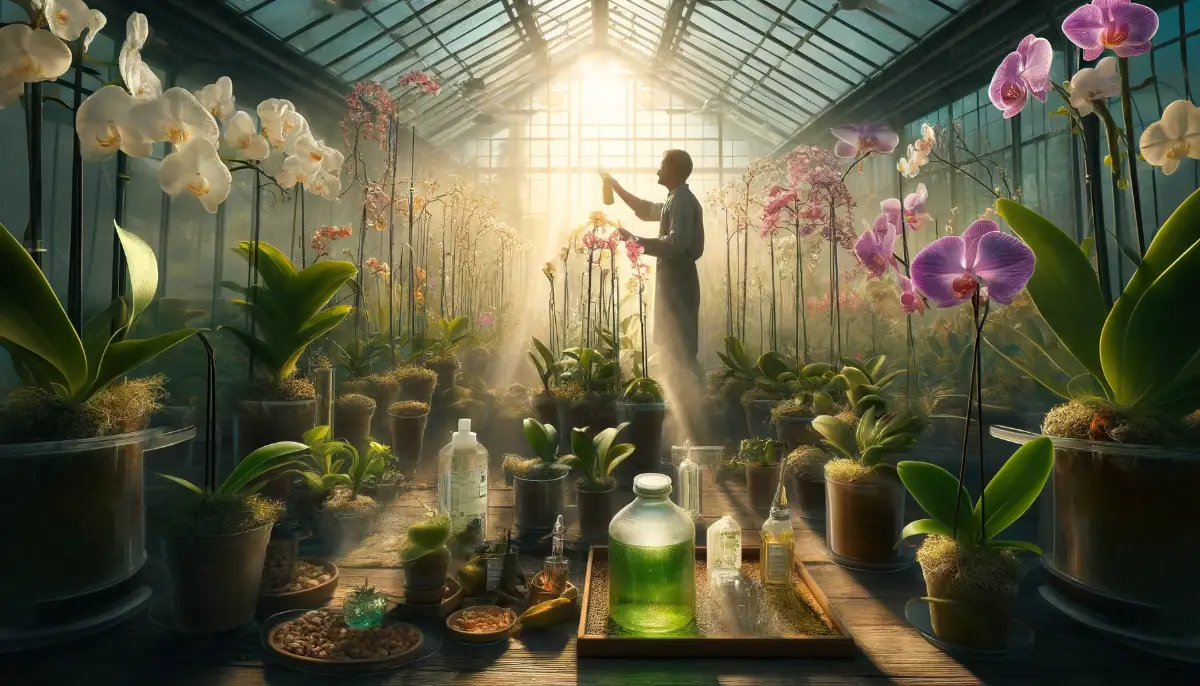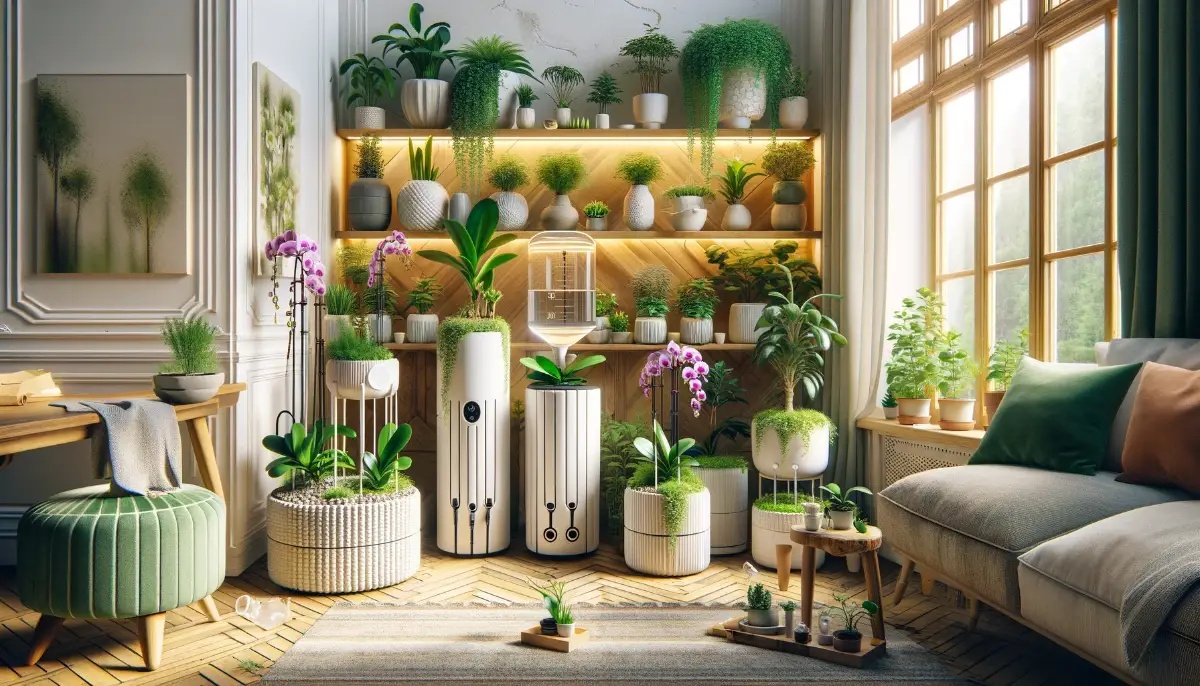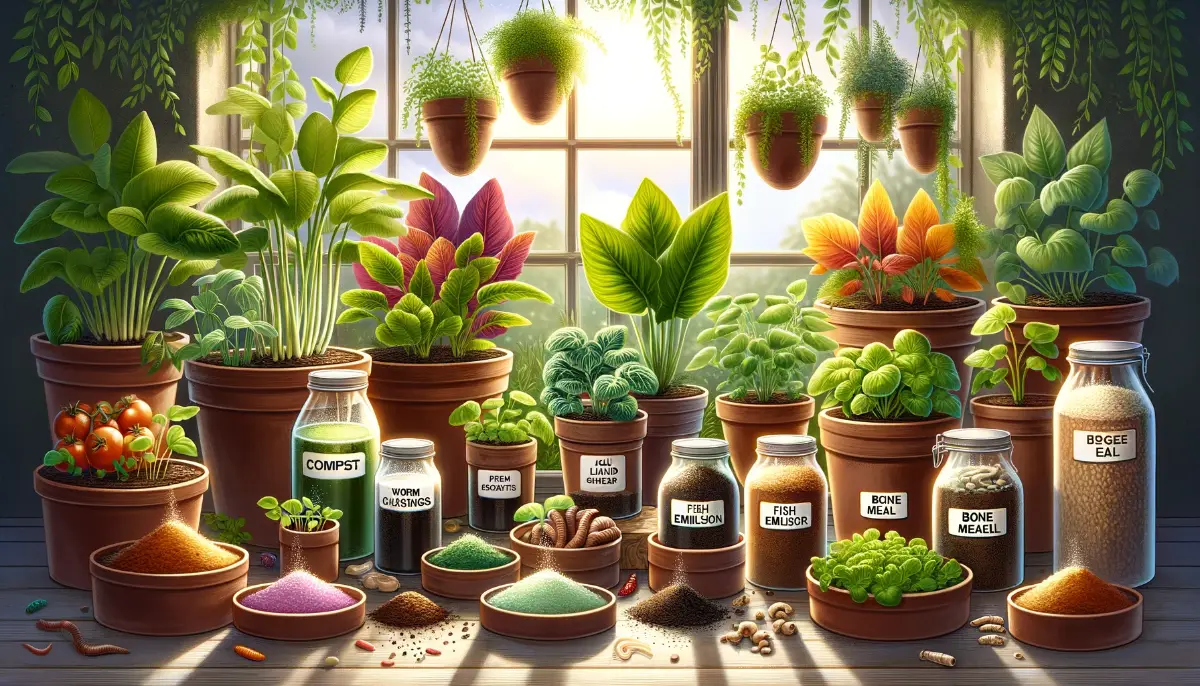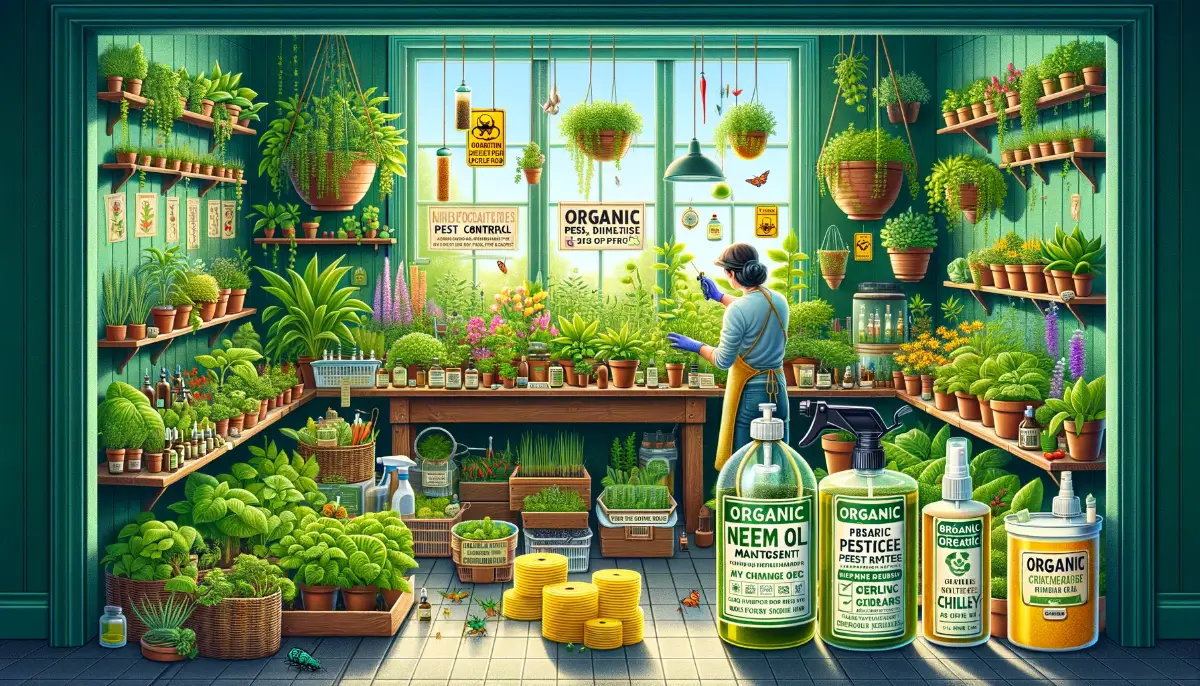Growing roses indoors offers a unique opportunity to bring the splendor and fragrance of these beloved flowers into your living space year-round. Unlike their outdoor counterparts, indoor roses require specific care to thrive in a less natural environment.
Challenges such as ensuring sufficient light, maintaining ideal humidity, and proper watering are paramount, as indoor conditions often differ greatly from those outdoors. The joy of successfully cultivating roses inside includes the ability to enjoy their beauty and scent daily, making the effort worthwhile.
- Roses need ample sunlight and can benefit from growing lights.
- Proper watering and humidity are critical for healthy indoor roses.
- Regular pruning and fertilization are essential for blooming.
Selecting the Right Rose Variety
Selecting the right rose variety is crucial for successful indoor rose gardening. Not all roses are suited for the indoor environment; therefore, choosing varieties that can thrive with less natural light and more controlled conditions is important.
Miniature Roses
- Characteristics: These are smaller versions of traditional roses, bred specifically for their compact size.
- Benefits: They fit well in limited spaces and still produce beautiful, full blooms.
Peace Roses
- Characteristics: Known for their large, colorful flowers and a sweet fragrance that can fill a room.
- Benefits: These roses are not only visually striking but also robust enough to handle less than ideal indoor conditions.
Queen Elizabeth Roses
- Characteristics: Grandiflora type known for tall, vigorous growth and clusters of blooms.
- Benefits: They can become a focal point in a room, offering height and continuous flowering.
Compact Varieties
- Considerations: Beyond specific types, any rose labeled as a ‘compact’ variety is likely a good fit for indoor conditions.
- Benefits: Generally requires less space and easier management regarding pruning and care.
Tips for Acclimating Roses to Indoor Environments
- Acclimation: Gradually introduce the rose to indoor conditions if it was previously grown outdoors.
- Lighting: Ensure the selected variety can thrive with the amount of natural light available, or be prepared to supplement with grow lights
These varieties are not just chosen for their size but also for their adaptability to less conventional growing conditions. Indoor roses will benefit from regular care tailored to their specific needs, such as adequate lighting, proper humidity, and regular feeding schedules.
By choosing the right variety, you can enhance your chances of indoor gardening success, enjoying the beauty and aroma of roses throughout the year.
Essential Supplies for Indoor Roses
Pots
- Type: Choose pots with good drainage to prevent waterlogging, which can lead to root rot. Terra cotta, ceramic, or plastic pots are suitable options.
- Size: Make sure the pot is large enough to accommodate the root system of the rose. A general rule is a pot that is at least 6-8 inches deep and wide.
Soil
- Type: A high-quality potting mix designed for roses or a general-purpose mix enriched with organic matter will provide the necessary nutrients and drainage.
- pH Level: Roses prefer a slightly acidic to neutral pH (around 6.0-7.0). You can easily test and adjust the pH with kits available online.
Fertilizers
- Type: Use a balanced, slow-release fertilizer that is specifically formulated for roses. During the growing season, feeding your roses every two weeks can promote healthier blooms.
- Application: Be careful with the quantity to avoid nutrient overload, which can harm the plant.
Lighting
- Sunlight: Roses require at least six hours of direct sunlight daily. If natural light is insufficient, especially in winter, consider using grow lights.
- Grow Lights: LED or fluorescent grow lights can supplement natural sunlight, ensuring your roses receive enough light regardless of the season.
Important Setup Steps
Step 1: Potting
- Pot Preparation: Ensure each pot has adequate drainage holes. If not, drill some or add a layer of gravel at the bottom to enhance water flow.
- Soil Placement: Fill the pot with the prepared soil mix, leaving enough room for the root ball of your rose.
Step 2: Planting
- Root Placement: Gently place the rose in the pot and spread out the roots. Fill in around the roots with soil, firming gently to eliminate air pockets.
- Watering After Planting: Water thoroughly after planting to settle the soil around the roots.
Step 3: Light and Placement
- Location: Place the potted rose in a location where it can receive adequate sunlight. South-facing windows are ideal. Adjust the position based on the light needs of the specific rose variety.
- Light Adjustments: Monitor the plant’s response to lighting and adjust the duration or intensity of grow lights as needed.
By following these steps and using the right supplies, you can create a thriving indoor garden of roses that brightens up your home all year round.
Daily and Seasonal Care for Roses
Sunlight and Location
Sunlight is a critical factor in the health and blooming of indoor roses. These flowers are known for their need for ample light to thrive and produce vibrant blooms. Here’s how to ensure your indoor roses receive the proper sunlight and are placed in the best possible location:
South-facing Windows: These are ideal as they provide the most continuous light throughout the day. Positioning your rose near a south-facing window maximizes the natural light it receives.
Supplement with Grow Lights: During winter months or in particularly cloudy climates, natural sunlight may not be enough. Supplemental lighting such as fluorescent or LED grow lights can provide the necessary spectrum of light roses need to continue growing and blooming.
Avoid Direct Heat or Drafts: While roses need light, they should be protected from the direct heat of midday sun which can scorch the leaves, as well as from drafts from windows or heating systems which can dry them out.
Rotate Regularly: To ensure even growth and prevent leaning, rotate your rose container periodically. This helps all sides of the plant receive equal light and grow uniformly.
Different varieties of roses may have slightly different light requirements. For example, miniature roses can sometimes manage with slightly less light than full-sized varieties. Adjust the positioning based on the specific needs of your rose type.
Ensuring your indoor roses are properly positioned for optimal light exposure is crucial for their health and blooming capability. Regularly monitoring and adjusting their exposure to natural and artificial light will help keep your roses vibrant and healthy.
Watering Your Indoor Roses
Watering indoor roses correctly is vital to their health and blooming. Roses in pots inside need different watering practices compared to those grown outdoors, primarily due to the controlled environment.
Check Moisture Level: Before watering, check that the top inch of soil is dry. Over-watering can lead to root rot, a common issue with indoor plants.
Frequency of Watering: The frequency depends on the season, with more frequent watering required during the growing season (spring and summer) and less during dormancy (fall and winter).
Water Deeply: When watering, do so thoroughly, allowing water to run out of the drainage holes at the bottom of the pot. This ensures the roots at the bottom receive moisture.
Avoid Wetting Leaves: Water directly onto the soil to prevent diseases such as black spot and powdery mildew, which thrive in moist conditions on the leaves.
Room Humidity: Indoor heating can dry out the air and soil quickly, necessitating more frequent watering in winter than might be expected.
Pot Material: The type of pot can affect soil moisture. Terra cotta pots, for example, allow soil to dry out faster than plastic or ceramic pots due to their porous nature.
Dormancy Period: Recognize when your rose goes into dormancy, usually signaled by yellowing and dropping leaves. During this time, reduce watering frequency.
Quality of Water: Use room temperature water as cold water can shock the roots. If your tap water is heavily treated, consider using filtered or distilled water to avoid salt build-up which can harm the roots over time.
Managing Humidity
Managing the humidity for indoor roses is crucial to mimicking the natural conditions they thrive in outdoors. Here’s how to optimize these environmental factors to help your roses flourish indoors.
Optimal Levels: Roses thrive best with humidity levels between 40-50%. This helps prevent the leaves from drying out and supports overall plant health.
Trays with Pebbles and Water: Place a tray filled with pebbles and water beneath the plant pots. As the water evaporates, it increases the humidity around the plants.
Room Humidifier: Using a room humidifier can help maintain a consistent humidity level, especially in dry climates or during winter when indoor heating systems are used
Hygrometer: Using a hygrometer to monitor the humidity levels around your roses can help you adjust methods as needed to maintain optimal conditions.
Controlling Temperature
Daytime and Nighttime Temperatures: Roses prefer a daytime temperature between 65-75°F (18-24°C) and a nighttime temperature that does not fall below 60°F (15°C). Consistent temperatures help prevent stress and promote healthy growth.
Avoid Drafts and Heat Sources: Keep your roses away from drafts, direct heat sources, and drastic temperature changes which can stress the plants and lead to poor health.
Seasonal Adjustments: Be mindful of changing seasons; move roses away from cold windows in winter and avoid air conditioning blasts in summer.
By carefully managing the humidity and temperature, you create a stable environment that closely mimics the natural conditions where roses thrive, promoting healthy growth and blooming. Regular checks and adjustments to these factors are key in maintaining the health of your indoor roses.
Fertilization Schedule for Indoor Roses
Creating an effective organic fertilization schedule for indoor roses is essential for promoting healthy growth and vibrant blooms.
Spring and Summer (Active Growth Period)
- Initial Feeding: Start fertilizing in early spring as new growth appears. Use a balanced organic fertilizer like fish emulsion or a specialized rose fertilizer to kickstart growth.
- Regular Feeding: Apply fertilizer every two weeks throughout the growing season. This helps sustain growth and flowering.
- Additional Nutrients: Incorporate compost or worm castings into the top layer of soil every month for added nutrients and to improve soil structure.
Fall and Winter (Dormant Period)
- Reducing Frequency: Taper off fertilizing as the growth slows down in late summer, and stop completely by mid-fall to prepare the rose for dormancy.
- Maintenance Feeding: If your indoor environment is warm enough to encourage year-round growth, consider feeding with a very diluted organic fertilizer once a month to maintain health without promoting new growth during winter.
Application Method: Apply liquid fertilizers directly to the soil, not the leaves, to prevent burn and ensure that nutrients reach the roots.
Dilution is Key: Always follow the recommended dilution rates on the packaging to avoid over-fertilization, which can harm the plant and disrupt soil ecology.
Regular monitoring and adjustments based on your specific indoor conditions and the rose’s response to the feeding schedule will ensure optimal results.
Pruning Indoor Roses
When to Prune
- Timing: The best time to prune indoor roses is in late winter or early spring before new growth starts. This timing helps stimulate the plant to produce fresh, vigorous growth in the spring.
- After Blooming: For roses that bloom more than once per season, light pruning right after the first bloom can encourage another round of flowers.
How to Prune
- Remove Dead or Weak Stems: Cut back dead, diseased, or weak stems to the base to prevent them from sapping energy from the healthier parts of the plant.
- Shape the Plant: Prune to shape the rose bush and encourage an open structure which improves light penetration and air circulation, reducing the risk of diseases.
- Promote Vigorous Growth: Cut back approximately one-third of the older stems each year to promote vigorous growth and rejuvenation
Maintenance Tips for Indoor Roses
Regular Inspection
- Check for Pests and Diseases: Regularly inspect your roses for signs of pests or disease. Early detection and treatment can prevent more serious problems.
- Cleaning: Remove any fallen leaves or petals from around the plant to prevent decay and mold growth, which can attract pests and diseases.
Soil and Root Care
- Refresh Soil: Annually, remove the top layer of soil and replace it with fresh, nutrient-rich soil or compost to maintain soil health and fertility.
- Root Health: Every couple of years, consider repotting your rose to prevent the roots from becoming pot-bound, which can stunt the plant’s growth and reduce blooming.
By following these pruning and maintenance guidelines, you can ensure that your indoor roses remain healthy, vigorous, and beautiful. Regular care not only enhances the aesthetic appeal of your plants but also boosts their overall health and longevity.
Common Problems and Solutions
Indoor roses, like all houseplants, can encounter a range of common problems. Understanding these issues and knowing how to address them effectively is key to maintaining healthy plants. Here are some of the most frequent challenges and their solutions:
Common Pests
Aphids
- Problem: These small, soft-bodied insects cluster on new growth and under leaves, sucking sap and weakening the plant.
- Solution: Wash them off with a strong stream of water or use an organic insecticidal soap or neem oil treatment.
Spider Mites
- Problem: Tiny spider-like pests that cause yellowing or bronzing of leaves and fine webs on plants.
- Solution: Increase humidity around the roses, as mites thrive in dry conditions. Regular misting or a humidifier can help. For severe infestations, use a miticide or insecticidal soap.
Thrips
- Problem: These tiny pests feed on flowers and foliage, leading to distorted and discolored leaves.
- Solution: Thrips can be difficult to control; using yellow sticky traps and neem oil applications can help manage their population.
Common Diseases
Powdery Mildew
- Problem: A fungal disease that appears as a white powdery deposit over the leaf surface and can lead to leaf distortion.
- Solution: Improve air circulation around the plant and reduce leaf wetness. Fungicidal sprays may also be necessary.
Black Spot
- Problem: Dark, sooty mold that forms on leaves, often with a yellow halo, leading to leaf drop.
- Solution: Ensure the plant is well ventilated and avoid wetting the leaves when watering. Remove affected leaves and apply a fungicide recommended for black spot.
Rust
- Problem: Small orange or yellow spots that form on the underside of leaves, which can cause the leaves to drop prematurely.
- Solution: Improve circulation around the roses and ensure they are not overcrowded. Fungicidal treatments may be required if the problem persists.
Environmental Issues
Incorrect Watering
- Problem: Over-watering can lead to root rot, while under-watering can stress the plant and reduce blooming.
- Solution: Check the soil moisture regularly and adjust your watering schedule accordingly. The soil should be moist but not soggy.
Insufficient Light
- Problem: Roses that do not receive enough light can become leggy and may not produce flowers.
- Solution: Move the plant to a south-facing window or supplement with grow lights to ensure it receives at least six hours of direct sunlight per day
By proactively monitoring for these common issues and responding promptly with the appropriate solutions, you can keep your indoor roses healthy and vibrant. Regular care and attention are the best defenses against pests and diseases.
FAQs about Growing and Caring for Indoor Roses
Can all types of roses be grown indoors?
Not all rose varieties are ideal for indoor cultivation. Compact and miniature roses, such as ‘Miniature Roses’, ‘Peace Roses’, and ‘Queen Elizabeth Roses’, are better suited due to their size and adaptability.
How often should I water my indoor roses?
Water your indoor roses when the top inch of the soil feels dry. Adjust the frequency based on the season, watering more during active growth periods and less during dormancy.
Do indoor roses need direct sunlight?
Yes, roses require at least six hours of direct sunlight per day. If natural sunlight is inadequate, consider using artificial grow lights.
What is the best soil for indoor roses?
Use a high-quality potting mix designed for roses or a general-purpose mix enriched with organic matter. Ensure the soil is well-draining and has a slightly acidic to neutral pH.
How do I prune indoor roses?
Prune indoor roses in late winter or early spring before new growth starts. Remove dead, diseased, or weak stems, and shape the plant to promote healthy growth and air circulation.
What common pests affect indoor roses, and how can I treat them?
Common pests include aphids, spider mites, and thrips. Treat infestations with insecticidal soap, neem oil, or by increasing humidity to deter spider mites.
How can I increase humidity for my indoor roses?
Place a tray with pebbles and water beneath the plant pots, or use a room humidifier to maintain optimal humidity levels around your roses.
What are the signs of overwatering in indoor roses?
Signs include yellowing leaves, soft and mushy base or roots, and a general appearance of decline. Reduce watering and ensure the pot has adequate drainage.
How should I fertilize my indoor roses?
Use organic fertilizers like fish emulsion or seaweed extract every two weeks during the growing season. Reduce the frequency of fertilization during the dormant period.
Can I move my indoor roses outside?
Indoor roses can be moved outside during warmer months but do so gradually to acclimatize them to the outdoor environment. Ensure they are moved back inside before the temperature drops too low.

